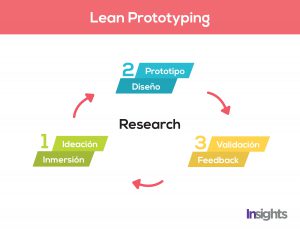Lean Prototype
What is Lean Prototype?
Definition:
Lean Prototype Development refers to the creation of a simplified, early-stage version of a product or system with the primary goal of quickly validating concepts, testing hypotheses, and gathering feedback from users. The lean prototype process emphasizes efficiency and iterative design, allowing teams to rapidly build, test, and refine prototypes before investing significant resources in full-scale development. This approach is commonly associated with the Lean Startup methodology and is widely used in product development to minimize waste, accelerate learning, and enhance the likelihood of building a successful, user-centered solution.
Analogy:
Consider lean prototype development as a rough sketch or a mock-up of a painting. Just as an artist might create quick sketches to experiment with composition, colors, and ideas before starting a detailed painting, lean prototypes serve as a preliminary exploration of product features and functionalities.
Further Description:
Lean prototype development involves several key principles and steps:
Problem Identification: Clearly define the problem or challenge that the prototype aims to address. This ensures that the prototype development process remains focused on solving specific user needs or business goals.
Hypothesis Formulation: Develop hypotheses about potential solutions or features that could address the identified problem. These hypotheses will guide the creation of the lean prototype.
Rapid Prototyping: Create a minimalistic version of the product or feature that can be built quickly. This prototype is designed to test the core concepts and gather user feedback efficiently.
User Testing: Deploy the lean prototype to a small group of target users for testing and feedback. This step helps validate assumptions, identify usability issues, and gather insights for improvements.
Iterative Refinement: Based on the feedback received, iterate on the prototype to address identified issues and enhance its functionality. The iterative refinement process is crucial for continuous improvement.
Cross-Functional Collaboration: Encourage collaboration among cross-functional teams, including designers, developers, and product managers, to bring diverse perspectives to the prototype development process.
Minimum Viable Product (MVP): The lean prototype often serves as the foundation for the Minimum Viable Product (MVP), a scaled-down version of the final product that includes essential features for initial launch.
Why is Lean Prototype Development Important?
Risk Mitigation: Lean prototype development helps identify and mitigate risks early in the product development cycle, reducing the likelihood of investing resources in unsuccessful ideas.
User-Centered Design: Gathering feedback from users at an early stage ensures that the final product aligns with user needs and preferences, leading to increased user satisfaction.
Cost Efficiency: Building and testing lean prototypes is a cost-effective way to experiment with ideas before committing substantial resources to full-scale development.
Time Savings: The rapid iteration cycle of lean prototype development allows teams to make quick adjustments based on user feedback, accelerating the overall product development timeline.
Innovation: By encouraging experimentation and exploration of ideas, lean prototype development fosters a culture of innovation within a development team.
Examples and Usage:
Dropbox: Dropbox started as a lean prototype with a simple video demonstration showcasing the concept. The founders wanted to test the idea’s viability before investing extensive resources in development.
Zappos: Before becoming a full-fledged e-commerce platform, Zappos started with a lean prototype—a website that aggregated shoe images from various retailers without holding any inventory. Customer orders were fulfilled by purchasing from the original retailers, validating the demand for the concept.
Twitter: The initial version of Twitter was a lean prototype developed during a hackathon. It focused on a simple idea of status updates and user interactions, which evolved into the social media platform we know today.
Key Takeaways:
- Clearly define the problem or challenge the prototype aims to address.
- Develop hypotheses about potential solutions or features.
- Create a minimalistic version of the product for quick testing.
- Gather feedback from a small group of target users.
- Continuously improve the prototype based on user feedback.
- Encourage collaboration among diverse teams for varied perspectives.
- The lean prototype often serves as the foundation for the Minimum Viable Product.
- Lean prototype development is crucial for risk mitigation, user-centered design, cost efficiency, time savings, and fostering innovation.





